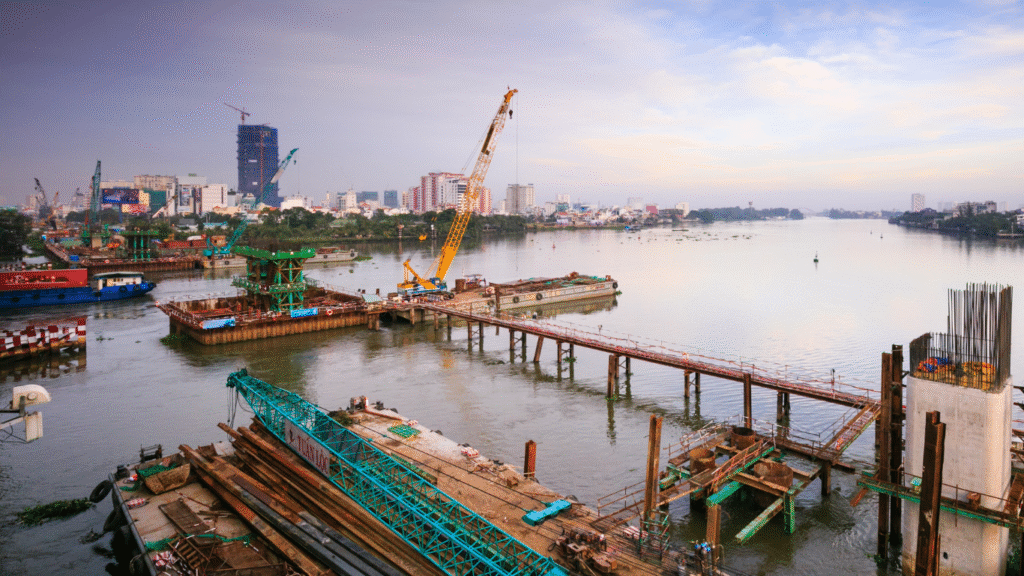Woolwich Dockyard, nestled along the River Thames in southeast London, is a historic gem that shaped England’s naval power for over 350 years. Founded by King Henry VIII in 1512, it was once called “the Mother Dock of all England” for its role in building and repairing ships that defined the Royal Navy. Though it closed in 1869, its legacy lives on through preserved structures and modern developments. This article explores the dockyard’s rich history, its key features, notable ships, and what visitors can see today in 2025. Let’s dive into the story of this remarkable site.
The Beginnings of Woolwich Dockyard
Woolwich Dockyard was established in 1512 by Henry VIII to build his flagship, Henri Grâce à Dieu (Great Harry), the largest warship of its time. Located on the Thames’ south bank near Greenwich, it was chosen for its deep waters and proximity to the royal palace. Initially set up in Old Woolwich, east of Bell Water Gate, the dockyard moved west in the 1540s to higher ground to avoid flooding. By 1546, the Crown had acquired land with two existing dry docks, known as Boughton’s Docks, which became the heart of operations. Over the centuries, the dockyard grew to a 56-acre site, boasting slipways, storehouses, and a ropeyard. It played a vital role in England’s naval dominance, earning praise from historian William Camden for its massive shipbuilding efforts.
Key Features of the Dockyard
At its peak, Woolwich Dockyard was a bustling hub of industry. It featured two large dry docks, rebuilt multiple times, with the western dock expanded to hold two ships end-to-end. Slipways for building ships, timber yards, cranes, forges, and a mast house supported operations. A notable clock house, built in 1670, included a mould loft for designing ships, while the Great Storehouse of 1698 stored vital materials. Most buildings were timber, but the brick mast house and storehouse stood out for their durability. The nearby Gun Wharf, east of Bell Water Gate, stored cannons and ammunition. In the 1830s, a steam factory with a prominent chimney (still standing) modernized the yard for steam-powered ships. Though much was demolished, surviving elements like the docks and chimney offer a glimpse into its past.
Notable Ships Built at Woolwich
Woolwich Dockyard crafted some of England’s most iconic ships. The Henri Grâce à Dieu (1514) was its first triumph, a massive warship symbolizing Henry VIII’s ambition. In 1559, the Elizabeth Jonas fought the Spanish Armada, showcasing the yard’s prowess. The Prince Royal (1610) and Sovereign of the Seas (1637) strengthened England’s naval might during the Age of Sail. In the 19th century, the Beagle (1820), famous for Charles Darwin’s voyage, and Niger (1846), used for screw propulsion trials, marked technological leaps. The Royal George (1756) was a tragic loss, sinking with 800 lives in 1782. The last ship, Thalia, launched in 1869, closed the dockyard’s shipbuilding chapter. These vessels highlight Woolwich’s role in naval innovation and exploration.
The Decline and Closure of the Dockyard
By the 19th century, Woolwich Dockyard faced challenges. The silting of the Thames made it hard for larger ships to navigate, and newer vessels outgrew the yard’s facilities. Despite innovations like the steam factory in the 1830s, the dockyard struggled to compete with larger yards like Portsmouth. It closed on October 1, 1869, after launching Thalia. Parts of the site were handed to the War Department as an annexe to the Royal Arsenal, while the western section was sold to the Royal Arsenal Co-operative Society in 1926. Military use continued until the 1960s, with the Royal Army Ordnance Corps using it as a repair depot during World War II. The closure marked the end of an era, but the site’s military and industrial legacy endured.
Woolwich Dockyard Today in 2025
Today, Woolwich Dockyard blends history with modern life. The eastern part became a housing estate in the 1970s, while the western section remains partly industrial, with the Royal Arsenal Co-operative Society still active. Visitors can see surviving 18th-century buildings like the Clock House (now a community centre), entrance gate, and guardhouse, plus two 19th-century dry docks and the iconic steam factory chimney. The Thames Path, extended in the 1980s, offers scenic walks along the riverside, connecting to the Woolwich Ferry. Modern developments like Mast Quay’s apartment towers (completed in 2022) have sparked debate for altering the historic vibe, but the area retains its charm. The nearby Woolwich Foot Tunnel (1912) and Thames Barrier add to the area’s appeal.
Why Visit Woolwich Dockyard?
Woolwich Dockyard is a must-visit for history buffs and curious explorers. Its preserved structures, like the Clock House and dry docks, tell the story of England’s naval past. The Thames Path offers stunning river views, while the dockyard’s proximity to the Royal Arsenal and Greenwich Heritage Centre provides more historical context. The area’s mix of old and new— Georgian buildings alongside modern apartments—creates a unique vibe. Easy access via Woolwich Dockyard railway station (8.5 miles from Charing Cross) and bus routes like 161 and 472 makes it convenient. For a deeper dive, check out the Greenwich Heritage Centre or walk the Thames Path to feel the dockyard’s quiet majesty. Always respect the site’s listed status and enjoy its blend of history and modern life.
Note: Respect private property when visiting and check local guidelines for access.



